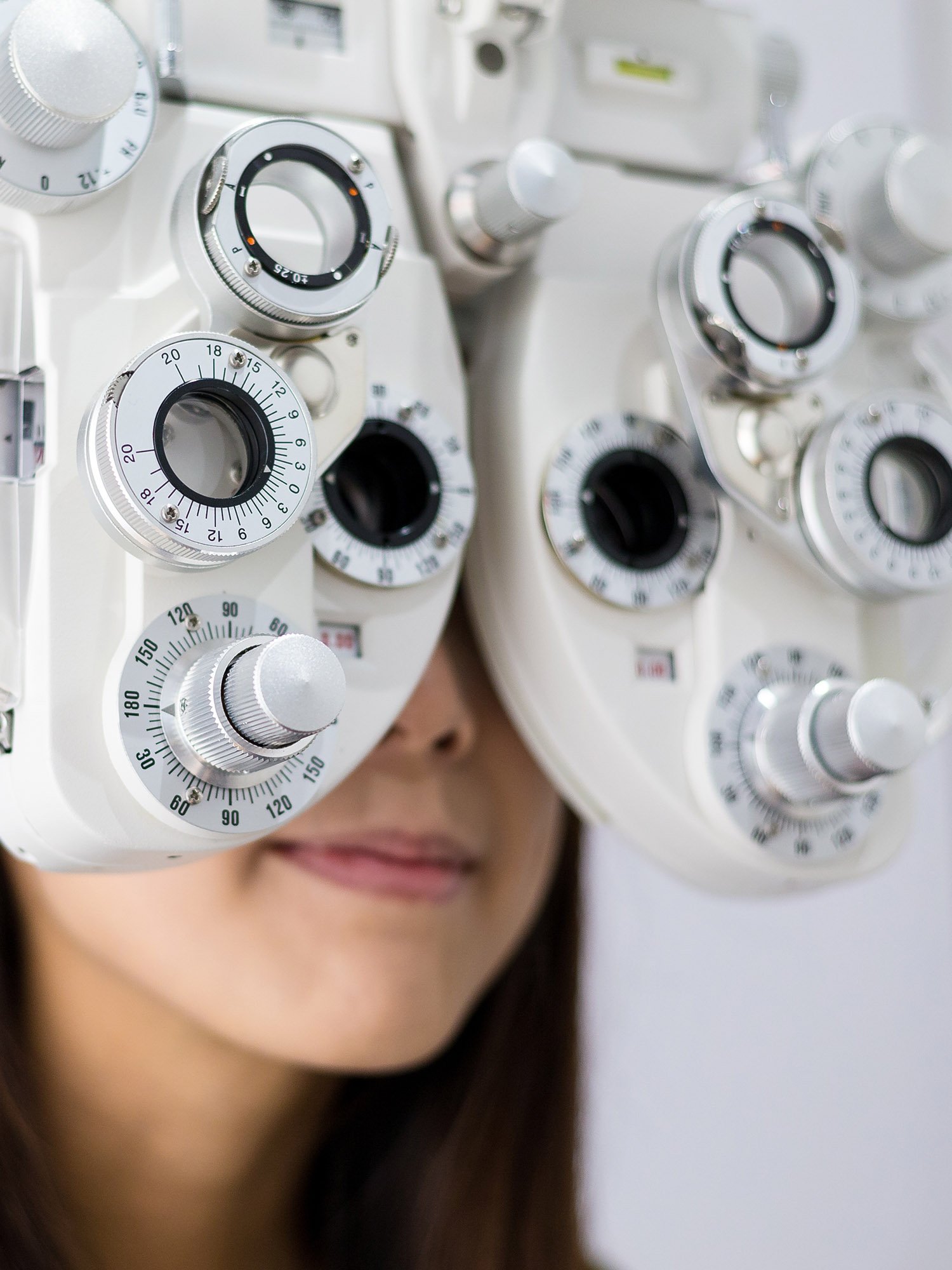comprehensive eye exam
Regular, comprehensive eye exams are important for maintaining healthy eyes and your best possible vision. Even if you feel your vision is fine, there are eye diseases and disorders that can lead to vision loss if not detected early.
A comprehensive eye exam can reveal significant details about your overall health long before your family practice doctor notices certain issues.
You’re likely familiar with a vision screening, which consists of reading letters off an eye chart to provide a quick assessment of how clearly you can see.
A comprehensive eye exam is different from a vision screening, as it includes a range of tests that thoroughly evaluate your vision and overall eye health to help identify common eye diseases and disorders.
The following are common tests you are likely to encounter:
Patient History
Obtaining your health history is an important part of a comprehensive eye exam. It’s vital that your eye doctor knows your personal history because it can relate to eye or vision symptoms, health conditions you or other members of your family have experienced, the medications you take, your allergies, and your work or environmental conditions.
Elements of your history can indicate if you’re predisposed to certain eye diseases or disorders. Additionally, they can show that specific interventions may be necessary to help keep your eyes healthy and your vision clear.
Visual Acuity
The visual acuity test, where you read letters off a Snellen Eye Chart, is the most recognizable part of a comprehensive eye exam.
While the results from this test are an initial indicator that corrective lenses may be necessary, it doesn’t provide all the necessary information to determine what your prescription might be.
Refraction
A refraction test determines your corrective lens prescription. During this test, you’ll most likely look through a phoropter — the futuristic-looking instrument with multiple lenses and dials commonly found in an eye doctor’s office. Using the phoropter, your eye doctor will present to you a series of lenses of differing powers and ask, “Do you see better with one or two? Three or four?” Based on your answers, your eye doctor will continue to narrow down the options until reaching a final prescription that best compensates for your refractive error (such as nearsightedness, farsightedness, astigmatism, or presbyopia).
Eye Movements
Your eyes must move, focus, and work together to see a single, clear image. This is especially true when following a moving object or when shifting your focus from one object to another.
During a common test used to assess eye movement, your eye doctor will ask you to hold your head still and use your eyes to follow a hand-held target. Difficulty with eye movements can affect reading, participation in sports, and other activities. Severe eye movement difficulties may indicate a condition such as amblyopia (lazy eye) or strabismus (cross-eye).
Eye Pressure Test
Glaucoma is one of the leading causes of blindness. Vision loss occurs when the intraocular pressure (IOP) inside the eye is too high, causing damage to the optic nerve. Monitoring your IOP on a regular basis is critical to the early detection of the disease.
A tonometry test measures your IOP. During this test, numbing drops are applied and a device called a tonometer gently touches your eye to measure the IOP. The procedure is painless and lasts just a few seconds. The instant results allow your eye doctor to determine if further glaucoma testing is required.
Pupil Dilation
It’s difficult to see the back of your eye under normal circumstances, yet this area houses important structures such as your optic nerve and macula and a system of blood vessels that supply your eye. To obtain the best view, your doctor must dilate your pupils so they will remain enlarged to facilitate a thorough examination.
Your eye doctor will place dilating eye drops in each eye. After 20 or 30 minutes, you’ll find it difficult to focus on objects up close, and you’ll be more sensitive to light, especially sunlight. Before you leave the clinic, you should wear the disposable sunglasses available at the check-in desk or bring your own sunglasses. The effects of the drops will wear off in a few hours.
Slit Lamp
A slip lamp is one of the most important and useful devices your eye doctor has for examining your eyes. The slit lamp combines a microscope and high-intensity line of light that enables your eye doctor to more precisely evaluate the external and internal structures of your eyes for damage or pathology.
Your doctor can thoroughly examine the front part of your eye to diagnose such conditions as:
Cataracts
Dry Eyes
Keratoconus
Corneal Abrasions
Pink Eye (Conjunctivitis)
With your pupils dilated, your doctor can also assess retina health (the back of your eye), including your optic nerve and macula. This part of the exam allows for the diagnosis and assessment of conditions that can cause serious vision loss or blindness, if left untreated, such as:
Diabetic Retinopathy
Age-Related Macular Degeneration
Detached Retina
Glaucoma
In addition, the status of the blood vessels in the back of your eye can provide early indications of overall health problems, such as diabetes or high blood pressure, often before you or your primary care doctor are aware of them. This is yet another reason to have a comprehensive eye exam on a regular basis.









